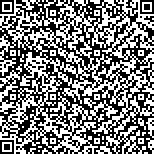| 摘要: |
| 为探究棕点石斑鱼(Epinephelus fuscoguttatus)在循环水养殖模式中的生长及养殖水体与石斑鱼肠道的菌群特征,51 000尾平均体质量为(13.72±0.51) g、平均体长为(8.90±0.66) cm的棕点石斑鱼苗被随机平均分配至6个直径为8 m的PE养殖水槽中,通过循环水设备进行封闭式养殖。结果显示:经过12个月的养殖,棕点石斑鱼的成活率为83.2%±7.6%,体质量为(487.32±12.68) g、体长为(31.24±1.22) cm,平均日增质量为1.30 g。采取16S rRNA高通量测序技术,定期检测养殖水体和棕点石斑鱼肠道菌群特征。结果显示:循环水养殖系统和棕点石斑鱼肠道中的菌群结构都相对稳定,没有表现出明显的季节差异;水体和棕点石斑鱼肠道的菌群具有一定的关联性,二者之间共有的OTUs (Operational Taxonomic Units)为2 259个,主要为发光杆菌属(Photobacterium)和弧菌属(Vibrio)等。水体和肠道样品中还含有大量的特异OTUs,其中棕点石斑鱼肠道中检测出19 838个特异性OTUs,主要是慢生根瘤菌属(Bradyrhizobium)、红树杆菌属(Mangrovibacter)、瘤胃菌属(Ruminococcaceaege)和嗜冷杆菌属(Psychrobacter)等,这些细菌大部分与鱼类肠道消化和维持肠道菌群平衡相关;养殖水体中检测出34 540个特异性OTUs,主要是假黄杆菌(Pseudofulvibacter)、极地杆菌(Polaribacter)、嗜中温菌属(Glaciecola)、油螺旋菌属(Oleispira)和海绵菌属(Spongiibacter)等,这些细菌对维持水体中有机物代谢平衡和菌群稳定具有重要的作用。本文为棕点石斑鱼循环水养殖模式的应用推广提供重要参考。 |
| 关键词: 循环水养殖 棕点石斑鱼(Epinephelus fuscoguttatus) 细菌多样性 |
| DOI:10.11759/hykx20220617001 |
| 分类号:S968.1 |
| 基金项目:2022年福建省海洋服务与渔业高质量发展专项资金项目(闽财指[2022]61号);2018年福建省海洋与渔业结构调整专项资金项目(闽财指[2018]829号) |
|
| Bacterial diversity analysis of recirculating aquacultureEpinephelus fuscoguttatus |
|
WU Bin
|
|
Freshwater Fisheries Research Institute of Fujian Province, Fuzhou 350002, China
|
| Abstract: |
| To explore the growth of Epinephelus fuscoguttatus in the circulating aquaculture system as well as the microflora characteristics of the aquaculture water and the grouper intestine, a total of 51 000 fries of E. fuscoguttatus (body weight:(13.72±0.51) g, body length:(8.90±0.66) cm) were randomly assigned to six groups. The groupers in each group were farmed in an 8-m-diameter aquaculture tank with a recirculating aquaculture system. We noted that, after 12 months of breeding, the survival rate of E. fuscoguttatus was 83.2%±7.6%, the body weight was (487.32±12.68) g, the body length was (31.24±1.22) cm, and the average daily gain was 1.30 g. 16S rRNA high-throughput sequencing technology was applied to regularly examine the microflora characteristics of the aquaculture water and the E. fuscoguttatus intestine. We found that the microflora structure in both the circulating aquaculture system and the E. fuscoguttatusr gut was relatively stable and did not demonstrate significant seasonal differences. The water flora and E. fuscoguttatus gut shared 2 259 common operational taxonomic units (OTUs), and the main genera were Photobacterium and Vibrio. Most OTUs in the water and gut samples were specific, among which 19 838 specific OTUs were detected in the gut, with the main genera being Bradyrhizobium, Mangrovibacter, Ruminococcaceae, and Psychrobacter. Most of these bacteria were associated with the digestion and microflora balance of the fish gut. A total of 34 540 specific OTUs were detected in the aquaculture water, with the main genera beingPseudofulvibacter, Polaribacter, Glaciecola, Oleispira, and Spongiibacter, which played important roles in maintaining the metabolic balance of organic matter and microflora stability in the aquaculture water. The present results are expected to provide an important reference for the application and promotion of the circulating aquaculture of E. fuscoguttatus. |
| Key words: recirculating aquaculture Epinephelus fuscoguttatus bacterial diversity |
